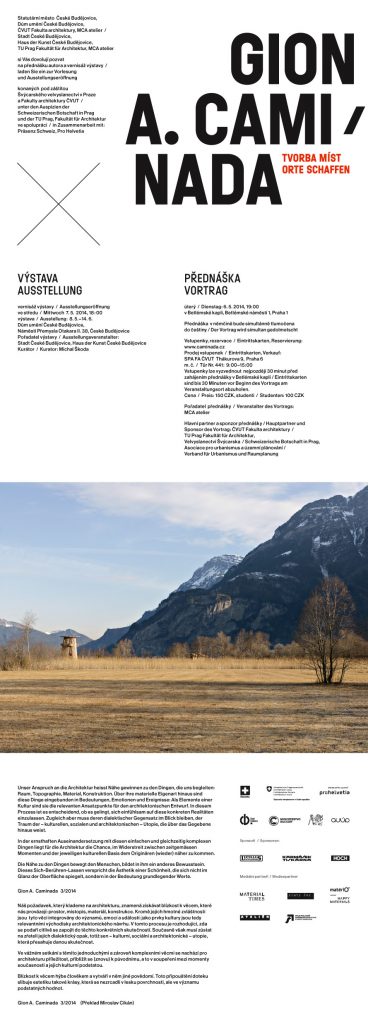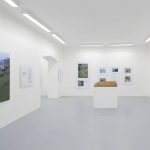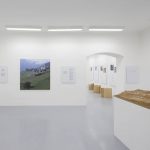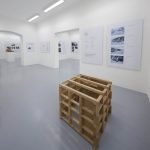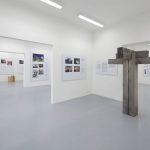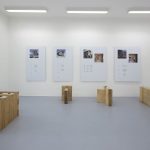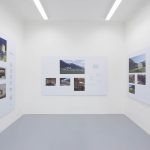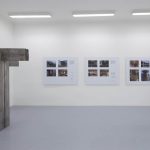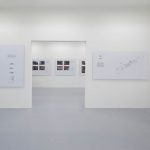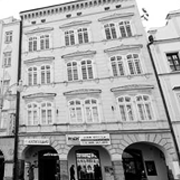Gion A. Caminada – Tvorba míst
| Date | – |
|---|
„ – Co mne na mé architektuře zajímá, je diskuse s místní tradicí. Ptám se jednoduše sám sebe, co nám mohou ty staré stavební systémy dávat. Kde je podstata těchto konstrukcí? Jak je lze přeměnit pro všechna ta nová využití, která moderní doba vyžaduje? Vždy se jedná o diskusi, o další vývoj. Věřím, že je to jádro tradice celé vesnice.“
To jsou slova švýcarského architekta Giona A. Caminady, jehož výstavu připravila Galerie současného umění a architektury českobudějovického Domu umění na květen a červen letošního roku.
Caminada přišel koncem 70. let s námětem, jak zlepšit vývoj a fungování vesnice. Vrin se stal místem, kam z velké části směřuje jeho celoživotní snažení. Dnes, s již jistým odstupem, lze konstatovat, že Caminadovy představy a náměty nezůstaly pouze na úrovni myšlenek, čehož je dokladem nebývalá proměna zmíněného místa.
Vrin, malá lidsky i ekonomicky vymírající vesnička, se začala proměňovat z mnoha hledisek. Lidé se přestali odstěhovávat, byla zde postavena celá řada obecních a soukromých staveb i moderní zemědělské budovy, umožňující současný způsob obdělávání krajiny. To vše, aniž by došlo k jakémukoliv konfliktu s tradičním obsahem vesnice. Provázání tradice a dědictví s novými moderními potřebami. Dokladem dobře zvolené cesty je i to, že Vrin byl jako první vesnice vůbec oceněn Wakkerovou cenou švýcarské památkové péče.
Architektura má pro Caminadu také sociální úlohu. Šťastná a krásná je pro něj tehdy, pokud napětí mezi tradicí a modernou přináší atraktivní řešení a funkce je spojena se způsobem života.
Caminada postavil svoji tvorbu na tom, že domy musejí odrážet lidské příběhy, architektura je interdisciplinární obor a technika je jen doplňkem. Současnými prostředky se snaží vtisknout tradiční tvář alpskému prostředí. Zároveň však přiznává, že se architektura stává stále více politickou záležitostí. Tvůrce musí překonávat řadu překážek souvisejících s politikou. Vidí v tom i částečnou slabinu současné architektury, která se odnaučila řešit problémy.
Středem zájmu je pro Caminadu krajina / periferie /. Charakterizuje ji jako domestikovanou přírodu. Kdysi značná podpora právě tohoto území švýcarskou vládou se postupně začala vytrácet, vláda se rozhodla podporovat centra / spádová města a velké vesnice /, jež by měla pozitivně ovlivňovat a inspirovat periferii. On je však přesvědčen o správnosti opačného postupu. Domnívá se, že takovýto způsob by naopak vedl ke zvyšování počtu opuštěných vesnic.
Ve své tvorbě tak velmi dbá na tradici a kontinuitu, obsah a ne pouze na obraz. Jeho stavby mluví srozumitelným jazykem s prioritou vlastní funkce. Velký důraz klade na detail a neustále zkoumá možnosti tradičních konstrukcí a snaží se stále hledat cesty k dokonalému modelu roubeného domu.
Můžeme hovořit o architektuře s reflexí původní kultury, s respektem k místu, které není jen romantickým prostředím, ale také krajinou s nástrahami rozmarů počasí.
Tato výstava, kterou Caminada připravil speciálně pro prostory českobudějovické galerie se soustředí na téma TVORBA MÍST. Pojednává zde méně o jednotlivém architektonickém objektu, ale mnohem více se zabývá ideou, jak nějaké místo posílit v jeho nejširší realitě. Výstava je rozdělena do pěti částí a divák se má možnost setkat jak s vesnicí Vrin, vztahy objekt – krajina, ale také i místem dalšího Caminadova působiště – ETH Curych.
Gion Antoni Caminada / 1957 / žije v obci Vrin ve švýcarském kantonu Graubünden. Nejprve se vyučil tesařem – truhlářem a poté navštěvoval uměleckoprůmyslovou školu. Po zkušenostech nabytých cestováním vystudoval architekturu na ETH Curych, kde dnes působí jako profesor. Koncem sedmdesátých let se vrací do rodné horské vesnice Vrin, zakládá vlastní kancelář a je zde rovněž politicky činný. Ve Vrinu a okolí stojí také většina jeho realizací, které mají zlepšit fungování vesnice. Zajímá ho diskuse s místní stavební tradicí a hledá možnosti použití starých stavebních konstrukcí pro moderní architekturu. Pro své stavby používá tradičních místních materiálů / dřevo, kámen /.
TVORBA MÍST
„Náš požadavek, který klademe na architekturu, znamená získávat blízkost k věcem, které nás provázejí: prostor, místopis, materiál, konstrukce, kromě jejich hmotné zvláštnosti jsou tyto věci integrovány do významů, emocí a událostí. Jako prvky kultury jsou tedy relevantními východisky architektonického návrhu. V tomto procesu je rozhodující, zda se podaří citlivě se zapojit do těchto konkrétních skutečností. Současně však musí zůstat na zřeteli jejich dialektický opak, totiž sen – kulturní, sociální a architektonické – utopie, která přesahuje danou skutečnost.
Ve vážném setkání s těmito jednoduchými a zároveň komplexními věcmi se nachází pro architekturu příležitost, přiblížit se (znovu) k původnímu, a to v soupeření mezi momenty současnosti a jejich kulturní podstatou.
Blízkost k věcem hýbe člověkem a vytváří v něm jiné povědomí. Toto připouštění doteku slibuje estetiku takové krásy, která se nezrcadlí v lesku povrchnosti, ale ve významu podstatných hodnot.“
G. A. Caminda
Výstava a přednáška se konají pod záštitou Švýcarského velvyslanectví v Praze a ve spolupráci
s Präsenz Schweiz a Pro – Helvetia.
Hlavní partner a sponzor přednášky – ČVUT Fakulta architektury Praha a Velvyslanectví Švýcarska
Mediální partner – Zlatý řez, Material Times, SPA
Sponzor – AUUP
Pořadatel přednášky – MCA atelier
pátek 30.5. 2014 10:00 – 24:00 Galerijní noc – ARCHITEKTURA V ODĚVU
VÝSTAVA : GION A. CAMINADA – TVORBA MÍST
V pátek 30. 5. 2014 proběhne v Domě umění celodenní specializovaný workshop Architektura v oděvu pod vedením módní návrhářky Liběny Rochové. Tento projekt je součástí Galerijní noci a bude ukončen vernisáží.
Po osmihodinové práci desetičlenné skupiny účastníků workshopu z řad široké veřejnosti, kteří budou plnoletí, budou mít zájem a chuť tvořit a budou řemeslně zdatní (drobné šití a lepení), vzejde deset modelů inspirovaných švýcarskou venkovskou architekturou Giona Antoni Caminada. Tyto modely budou vtěleny do výstavy zmíněného architekta.
Zájemci se mohou hlásit na emailu sarka(tečka)kosova(zavináč)email(tečka)cz.
Workshop : 10:00 – 18:00 Architektura v oděvu – celodenní workshop s módní návrhářkou Liběnou Rochovou
Vernisáž : 20:00 Architektura v oděvu – Galerii současného umění a architektury
21:30 – 22:30 *Reichel & Satoranski* Dům umění města ČESKÉ BUDĚJOVICE. Experimentální duo Julius Reichel a Satoranski (Jaroslav Basta) audiovizuální a pohybová intervence na pomezí instalace, akce a performance.
GION A. CAMINADA – CREATING PLACES
Lecture: Tuesday, 6 May 2014, 7 p.m., Betlémská kaple / Bethlehem Chapel – Betlémské náměstí 1, Prague 1
Opening of the exhibition: Wednesday, 7 May 2014, 6 p.m.
Gallery of Contemporary Art and Architecture – House of Art, České Budějovice
The exhibition will be held till the 15 June 2014
Curator: Michal Škoda
“The aspect of my architecture that I am interested in is the discussion with the local tradition. I pose a question to myself what those old architectural systems may give us. Where is the substance of those constructions? How can they be transformed for the new kinds use to meet the requirements of the present time? It is always the matter of discussion and a new development. I believe that it is the core of tradition of the entire village.“
These are the words of the Swiss architect Gion A. Caminada, whose exhibition was prepared by the Gallery of Contemporary Art and Architecture of the House of Art in České Budějovice for May and June this year.
In the late 1970s, Caminada appeared with a project of improving the development and functioning of the village. And Vrin became the place that Caminada focused a major part of his lifelong effort on. Nowadays, with the benefit of hindsight, we can state that certain ideas and proposals of Caminada’s have not remained at the level of considerations only, which is proved by an essential change on the place mentioned.
Vrin, a village that was dying, both in terms of population and economy, started to change in a number of respects. People stopped moving away, and a number of communal and private buildings, as well as modern farming constructions enabling a contemporary manner of cultivating land, were built. All of this was achieved without a conflict with the traditional nature of the village. Traditions and the cultural heritage were linked with new, up-to-date needs. Another proof of the well-chosen way is that Vrin was the first village to be awarded the Wakker Prize of the Swiss Heritage Society.
In Caminada’s work, architecture also plays a social role. It is happy and beautiful only if the tension between tradition and modern ways bring attractive solutions and if its function is linked with a way of life.
Caminada based his work on the presumption that houses have to reflect people’s stories, and that architecture is an interdisciplinary field, while technology is merely its complement. He uses contemporary means to imprint a traditional appearance to the Alpine environment. However, at the same time, he admits that architecture is becoming a political issue to an increasing degree. The designer has to overcome a number of obstacles related to politics. This is what he partly views as the weak point of contemporary architecture, which has forgotten to solve problems.
Caminada focuses his interest on the countryside /periphery/. He characterizes it as the domesticated countryside. Although this area once received a generous support from the Swiss government, this support started to fade away as the government decided to support centres /catchment towns and large villages/, which are supposed to influence and inspire the periphery. However, is he convinced that proceeding in the opposite direction is correct. He assumes that this way would, on the contrary bring about an increase in the number of abandoned villages.
He is very particular about tradition and continuity in his work, not only about the picture. His constructions communicate in a comprehensible language, giving priority to their own function. It places a great emphasis on details while studying further possibilities of traditional constructions and trying to find ways towards a perfect model of the timbered house.
We can talk about architecture with a reflection of the original culture, with respect to a particular place, which is not only a romantic area, but also a countryside with whims of the weather.
This exhibition that Caminada prepared specially for the Gallery in České Budějovice focuses on the subject of THE CREATION OF PLACES. At this venue, it deals with a particular architectonic object to a lesser extent, but gives more attention to the idea of how a place could be strengthened in its broadest reality. The exhibition is divided into five parts, and visitors may see both the village of Vrin and the relationships between objects and the countryside, and the place of Caminada’s next place of work – the ETH Zurich.
Gion Antoni Caminada / 1957 / lives in the village of Vrin, in the Swiss canton of Graubünden. First, he learned the trade of carpenter and cabinet maker and then he attended a school of applied arts. After gaining experience on his travels he graduated from the ETH Zurich, the Department of Architecture, where he currently works as a professor. In the late 1970s, he returned to his native village of Vrin, founded his own office, and is also politically active there. Most of his realised works that focus on optimising the functioning of the village are situated at Vrin and its surroundings. He is interested in discussions with the local building tradition, and seeks possibilities of employing old building constructions in modern architecture. To realise his constructions he uses traditional local materials /wood, stone/.
CREATING PLACES
“Our requirement to architecture consists in getting closer to the things that accompany us: space, topography, material, and construction, and these things are, apart from their specific material properties, integrated into meanings, emotions and events. Thus they are, as elements of culture, relevant starting points of the architectonic design. The decisive aspect in this process is whether we will succeed in getting sensitively integrated into these concrete facts. At the same time, however, we have to take their dialectic opposite, i.e. a dream into consideration – a cultural, social and architectonic utopia exceeding the given reality.
A serious meeting with these simple and, at the same time, complex things includes an opportunity for architecture to get closer (again) to the original concept, which consists in a rivalry between the moments of the present time and their cultural basis.
Being close to things moves the man and creates a different awareness in him. Allowing such a touch to happen promises specific beauty that is not reflected in the shine of superficiality but in the meaning of essential values.“ G. A. Caminda.
The exhibition and lecture are held under the auspices of the Swiss Embassy in Prague and in cooperation with Präsenz Schweiz and Pro Helvetia.
The main partner and sponsor of the lecture – the Czech Technical University, Faculty of Architecture in Prague and the Embassy of the Swiss Confederation
Media partner – Zlatý řez, Matério, SPA
Sponsor – AUUP
Organiser of the lecture – MCA Atelier
